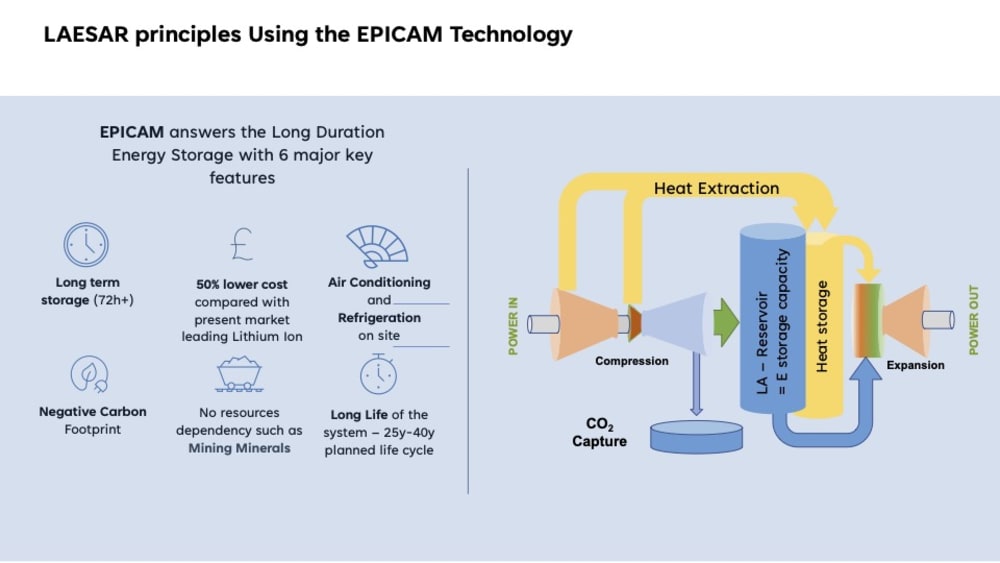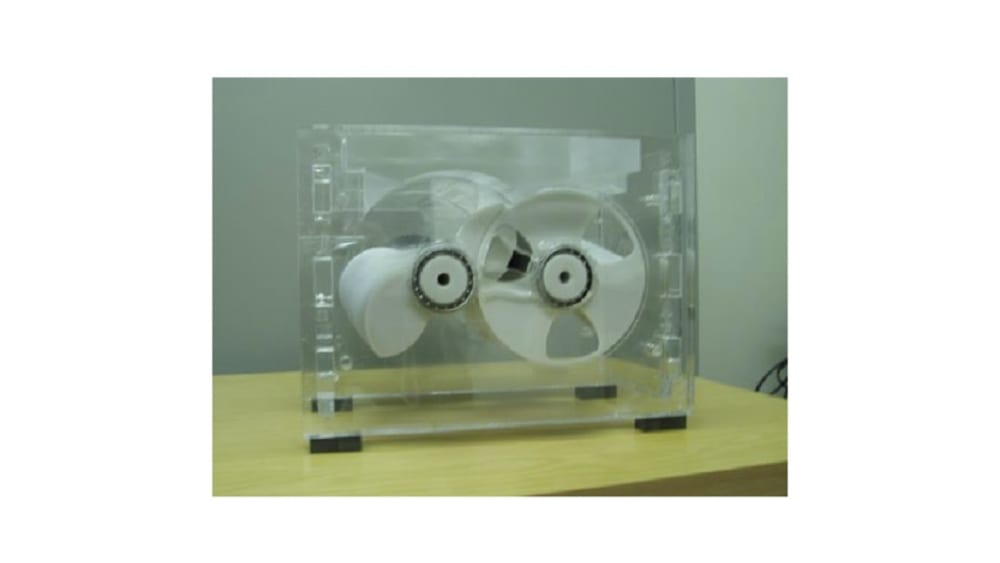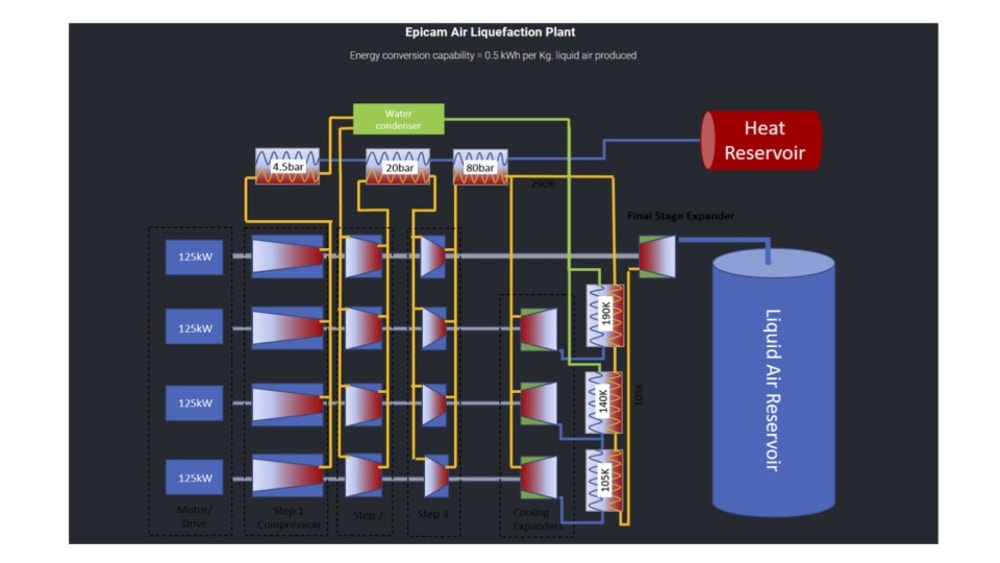
My entry is the Liquid Air Energy Storage and Regeneration (LAESAR) system – to address both of the twin problems heading the global sustainability agenda: A) the need for energy storage on global power grids when they have transitioned to full dependence on renewable energy, and B) the need to extract sufficient CO2 from the atmosphere to repair Earth’s climate. The energy is stored by cooling air to -200C using compression, heat extraction and expansion. The resulting liquid air can be stored in thermally insulated tanks and heat of compression is collected in heat transport fluid and held in separate insulated tanks. Both can be stored for hours, days or weeks until needed for power regeneration. Cryogenic extraction of CO2 (and CH4) as biproduct is incorporated in the liquefaction process at negligible extra cost.
At present, no technology exists to meet the challenge of supplying energy storage to enable global power grids to operate entirely on renewable energy. This will create a massive new market to make 10% of grid capacity available from storage. Comprehensive examination by a Team at Imperial College, London under Prof. Martinez-Botas resulted in a thermodynamic model showing that LAESAR can deliver storage to a power grid with 68% round-trip efficiency. A prototype will demonstrate LAESAR’s leading position as a prospective supplier to global power grids.
LAESAR follows the pioneering initiative by Highview power to introduce liquid air energy storage in the power industry. As a new first competitor, LAESAR offers advantages in both efficiency and scalability while using an essentially similar process. However, the novel paired rotor displacement devices which deliver LAESAR’s improved air compression and expansion, contrast sharply with the turbomachinery used by Highview. I invented these rotary devices, which have been developed in-house, patent protected and proven effective by my Company Epicam. Manufactured practicably by additive techniques, their unique feature is their ability to achieve volume change in compressible fluids by displacement action without internal mechanical friction, using only small rotor-rotor and rotor-stator clearances of 5 – 25 microns as illustrated by the compressor model in Fig 1. The layout of the liquefaction system is shown in Fig. 2 with its 3-stage compression to 80 Bar, cooling supply and power recovery via single stage expanders. A schematic of the complete system is shown in Fig. 3.
Cryogenic extraction of greenhouse gases CO2 and CH4 is also incorporated in the liquefaction process at negligible additional cost. LAESAR is thus substantially carbon negative over its lifetime. It will profitably provide storage on global power grids with a CO2 biproduct extracted from the atmosphere. Wind turbines will step-change by powering the liquefier directly to maintain maximum storage of energy and simplify the management of demand and supply on the grid. Within a few years, CO2 extraction could reach the IPPC target of 10 gigatons per year and before 2050 the 500 gigatons required to complete the repair of Earth’s climate could be achieved using LAESAR, avoiding the multi-trillion dollar costs of extraction by alternative filtration processes.
-
Awards
-
 2023 Top 100 Entries
2023 Top 100 Entries
Like this entry?
-
About the Entrant
- Name:Tony Dye
- Type of entry:individual
- Software used for this entry:All software developed in-house.








